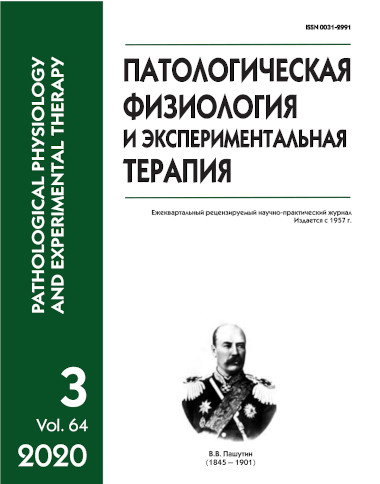Effect of moderate physical exercises on the relationship of variability of the heart rhythm with the level of blood pressure and hemodynamic functions in women with essential hypertension
Abstract
Aim. To study the relationship between heart rate variability (HRV), blood pressure and hemodynamic functions in women with essential hypertension (EH) receiving a drug therapy alone (EH-1) or in combination with regular courses of kinesitherapy (EH-2). Methods. The study included 72 women with EH. The EH-1 group consisted of 37 women with stage II arterial hypertension. The EH-2 group consisted of 35 women with stage II arterial hypertension who underwent 3-4 1.5-month courses of kinesitherapy (controlled moderate physical activity) on a regular basis for 2-3 years. Hemodynamics was studied with a miniature Dynamic Light Scattering (mDLS) sensor from Elfi-Tech (Rehovot, Israel), which measures signals initiated by the skin blood flow by decomposing the signal into frequency components associated with different hemodynamic sources. Information on the RR interval variability was extracted from the pulse component of mDLS signal, and indicators of heart rate variability were calculated. A Hemodynamic Index (HI) was introduced. The HI dependence on shear rate was interpreted by matching each frequency band with a specific shear rate (HI1, low-frequency; HI2, intermediate; HI3, high-frequency). The following relative (RHI, Relative Hemodynamic Index) and oscillatory (OHI, Oscillatory Hemodynamic Indexes) indexes were used: neurological (NEUR), Mayer (MAYER), respiratory (RESP), and pulse (PULSE) ones. The HRV indexes included HR (Heart Rate), PWR (Power, total oscillation power), LF (Low Frequency), HF (High Frequency), SDNN (Standard Deviation of the Normal-to-Normal), RMSSD (Root Mean Square of the Successive Differences). CVI (Cardiac Vagal Index), and CSI (Cardiac Sympathetic Index). Results. In women who were on drug therapy alone (EH-1), negative relationships were found for LF and LF/HF with systolic, mean and pulse pressure. For EH-2, PWR, LF, and HF negatively correlated with pulse pressure. For EH-1, HR positively correlated with the hemodynamic indices HI1 and RHI2 and negatively correlated with RHI3; RMSSD negatively correlated with RHI3; and HF negatively correlated with HI1/HI3. For patients with EH-2, negative correlations were observed for SDNN and RHI1, PWR and RHI1; positive correlations were found between PWR and HI2; HI3, RHI2, HF and RHI3; and between LF/HF and HI1/HI3. HF negatively correlated with HI1/HI3 and with RHI1. LF/HF negatively correlated with RHI3, and CSI negatively correlated with RHI3. In patients with EH-1, SDNN, PWR, LF, HF, CVI, and NEUR_HI1 were directly related, which indicated an effect of these factors on the endothelial blood flow (HI1). In the EH-2 group, only positive correlations were found between LF, HF, and NEUR_HI3. In EH-1 patients, all oscillatory rhythms influenced BP; this influence could be both negative (for MAYER_HI1, PULSE_HI2) and positive (for MAYER_ HI2, RESP_HI3). In EH-2 patients, no relationship was found between blood pressure and oscillatory indices. Conclusion. The smaller number of factors influencing blood pressure and hemodynamics in the EH-2 group compared to the EH-1 group was more beneficial and favorable, which ensured faster and steadier normalization of blood pressure.






